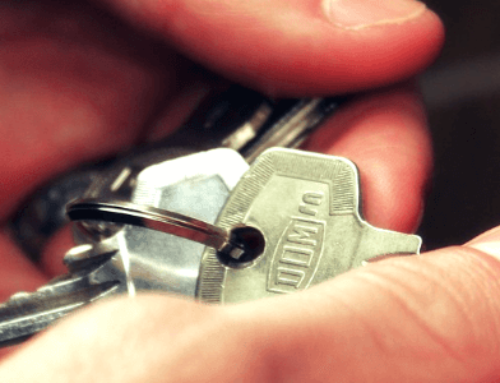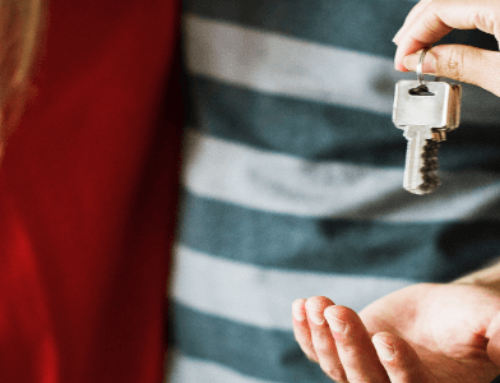Buying your first home is a bit of a big deal. Homeownership is essentially considered a rite of passage for Australians as they make their way into the exciting and sometimes treacherous world of the property market. It goes without saying that buying a home is somewhat on the expensive side, and can more often than not be one of the biggest and complicated financial commitments that we will make throughout our entire lives. So with that said, it’s no surprise that a good majority of us remain in the dark as to the best way of approaching what may sometimes look like a fairly insurmountable task.
Whether you’re starting from scratch, half way through saving for a deposit, or totally unsure about where to begin, this is a guide for the aspiring homeowner to help outline the key steps to take when preparing to save for a home.
I can assume that you know what you want in terms of a home, likely down to the finest of details, but when it comes to finances, not everything is so easily discernible. So aside from making sure that the interior walls match your favourite set of cutlery and that you prized French bulldog has their own room next to yours, we’ll have to cover the basics first. When it comes to finances then we need to talk about budgeting and credit scores and all those fun things that often fall by the wayside when people fantasise about buying their forever home. So without further ado let’s bust out the calculators and go through the essentials of planning to buy a home.
1. Check your credit score
Your credit score is the magical number that will likely determine what types of loans you will and won’t be approved for. In order to secure a home loan for the house of your dreams, you’ll first need to prove to the bank that you’re a suitable candidate for a loan. So basically your credit score is based on your entire history of spending and saving which will then determine how likely you are to repay your loan on time and in full – thus giving you your score.
So how do you find out your credit score?
This is likely the very first thing you’ll want to do before even looking (and drooling) over any homes that you’re interested in, because if you do happen to have a poor credit rating, that home might not be your best option. Credit reports are completely free to obtain and can be accessed through a reliable government website. So go and check your credit score so you have a better idea about your financial options and whether or not you need to make some amendments by fixing up a bad credit rating.
Once you’ve found out this magic number, you can then begin to create a budgeting plan that works around this.
2. Get money smart
That’s just another way of saying that you will now need to assess how much you can afford for a home and then figure out a savings routine and stick by it as though your life depends on it. Your ideal price range is going to be determined by a number of factors, some of which include:
- Your projected financial state based on the loan you’re likely to receive
- The property market predictions for the coming years ahead
- Any capital that you currently own
- The cost of property within your market of interest
- The cost of living within this market
By having a good grasp of the costs associated with all of these factors, you will be in a better position to understand what you will and won’t be able to afford over the long run. And really when it comes to budgeting for a home, you need to think long term. There’s little point in using your current financial state to estimate what you’ll be able to afford 5 years down the line, just as there’s not much use in looking at the present condition of your preferred property market when you won’t be looking to actually purchase any property until next year at the earliest.
So once you’ve come up with as accurate an estimate as possible given these contributing factors, you will need to decide on your budgeting plan and ensure that you do everything in your power not to stray from it. This is because the next step in the financial staircase of homeownership planning is to maintain a positive credit rating.
3. Look after your credit rating
Take care of your credit rating as though it were a newborn baby. Keep your eyes on it, prioritise its health, and try not to let it drive you crazy. It’s quite incredible how often people underestimate the importance of a good credit rating, but the reality is that if you want to be approved for a decent home loan that won’t leave you desperately scrounging for coins under the couch cushions, you will need a positive credit score. Don’t get me wrong, I’m not here to tell you that this is an easy thing to do, especially if you’re just about to buy a new home, but it is essential that you do so. On the other hand, as hard as it might be to maintain a good credit rating, it can be all too easy to lower your credit score by making poor purchasing decisions – which we are all prone to do.
Given that, you’re going to want to be smart about your spending habits as soon as you have a budget in place, leading all the way up to securing your home loan. If you have a lot in the way of credit card debt, this is going to need to be your first priority. Focus on consolidating your debts and maintaining a healthy and consistent bank balance from now on and moving forward.
4. Saving for a down payment
Next up, it’s time to make a plan to save for that pesky house deposit. Everything you’ve done up until this point will have painted a fairly comprehensive picture about what you can afford and how you expect to prepare for your financial outcomes. You now need to devise a strategy to ensure that you save up for your deposit – come hell or high water. Start by assessing your current living expenses, see if you can’t make any sacrifices (such as making pasta for dinner instead of order that lobster bisque from Uber Eats), and then determine what you have left over at the end of each month to contribute to your down payment goal. It’s not likely to be the most fun part of your homeownership journey, but it is a crucial one. It really is all about consistency though. You want to prove to the banks that you’re financially reliable… whether or not that’s the case. Just show them that you are.
5. Plan for your future cost of living
The last thing you’ll need to address is going to be your ability to afford the average cost of living within the area you’re planning to move to. This might not seem like a necessary step, but you might be surprised at how much variation exists from suburb to suburb and home to home. Are you moving to the inner city or out to the country? Are you moving into a larger home, smaller home, or one that needs renovating? Taxes, groceries, childcare, schooling, petrol, power use, it’s rarely the same everywhere you go, and it all adds up. So if you want to get a clear understanding of your future finances then do some research into the cost of living within the market you’re planning to buy into.
Saving for your first home is something many Australians will do at some stage in their lives, but no everyone will find it easy. It can be a very long, eye-watering, and highly complicated process, so it pays to have a foolproof plan that will see you through the hard times and keep you on track to your eventual goal of that coveted position of homeownership. You’ll get there, just keep up the hard work and I’ll be here saying a little prayer to the housing gods on your behalf.
Before you go, if you’re in the process of buying your first home, I’d highly recommend you read our article outlining the most common lies a real estate agents will feed you while you’re house hunting. Check it out here!







Leave A Comment